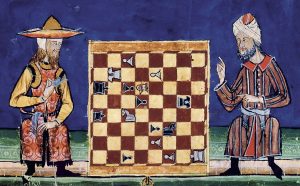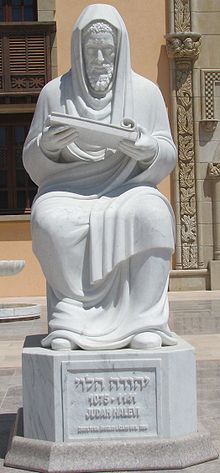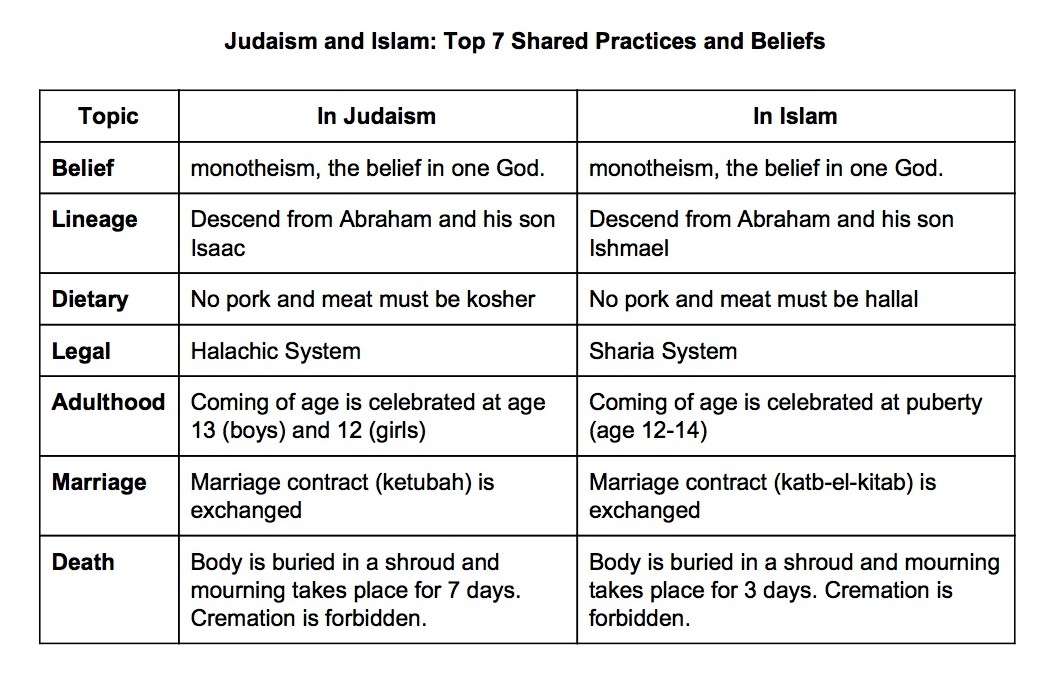#54 Jewish History – Jews & Muslims, Together in the Middle Ages
#54 Jewish History – Jews & Muslims Together in the Middle Ages
 In this lesson, you will explore the a time when Jews and Muslims lived in harmony and thrived together. While in the 21st Century, there is much political, social, and religious concern about Jewish-Muslim relations in the world, it was not always this way. At one time, Jews and Muslims lived side by side, worked together, studied together and even today, there are many similarities the way Islam and Judaism is observed from a religious perspective. This common era is a hopeful sign of the potential for good things to come in our world.
In this lesson, you will explore the a time when Jews and Muslims lived in harmony and thrived together. While in the 21st Century, there is much political, social, and religious concern about Jewish-Muslim relations in the world, it was not always this way. At one time, Jews and Muslims lived side by side, worked together, studied together and even today, there are many similarities the way Islam and Judaism is observed from a religious perspective. This common era is a hopeful sign of the potential for good things to come in our world.
“There are conflicts in every family, but brothers and sisters should always work at making things better in their relationships – no matter the history.”
#1: Know the past to prepare for your future
 Islam began in 711 CE and grew very quickly under the leadership of Mohammed and his followers. Muslim armies, originating in Arabia and North Africa, conquered most of the Iberian Peninsula (Spain and Portugal). As a result, Spain became very culturally diverse: Muslims ruled but people of all different backgrounds came to live together. Spain prospered greatly under Islamic rule and became a land of opportunity and trade which benefited all cultural groups, including the Jewish community. During this Golden Era in Spain from 1000-1250 CE, Jews wrote and studied in Arabic and developed great art, music, culture, dance, and science, and medicine.
Islam began in 711 CE and grew very quickly under the leadership of Mohammed and his followers. Muslim armies, originating in Arabia and North Africa, conquered most of the Iberian Peninsula (Spain and Portugal). As a result, Spain became very culturally diverse: Muslims ruled but people of all different backgrounds came to live together. Spain prospered greatly under Islamic rule and became a land of opportunity and trade which benefited all cultural groups, including the Jewish community. During this Golden Era in Spain from 1000-1250 CE, Jews wrote and studied in Arabic and developed great art, music, culture, dance, and science, and medicine.
#2 WATCH: Meet Qasmunah
#3 Yehuda Halevi and Jewish Scholarship in The Golden Era
 Judah Halevi (1075 – 1141) was a Spanish Jewish physician, poet and philosopher. He was born in Spain, either in Toledo or Tudela,[1] in 1075 and died shortly after arriving in Palestine in 1141. Halevi is considered one of the greatest Hebrew poets, celebrated both for his religious and secular poems, many of which appear in present-day liturgy. His greatest philosophical work was The Kuzari.
Judah Halevi (1075 – 1141) was a Spanish Jewish physician, poet and philosopher. He was born in Spain, either in Toledo or Tudela,[1] in 1075 and died shortly after arriving in Palestine in 1141. Halevi is considered one of the greatest Hebrew poets, celebrated both for his religious and secular poems, many of which appear in present-day liturgy. His greatest philosophical work was The Kuzari.
He often referred to himself as coming from Christian territory, which would point to Toledo, which was conquered by Alfonso VI from the Muslims in Halevi’s childhood (1086). As a youth, he seems to have gone to Granada, the main center of Jewish literary and intellectual life at the time, where he found a mentor in Moses Ibn Ezra. He was educated in traditional Jewish scholarship, in Arabic literature, and in the Greek sciences and philosophy. As an adult he was a physician, apparently of renown, and an active participant in Jewish communal affairs.
Like most Jewish intellectuals of Muslim Spain, Halevi wrote prose in Arabic and poetry in Hebrew and he was the most prolific of the Hebrew poets and was regarded by some of his contemporaries, as well as by modern critics, as the greatest of all the medieval Hebrew poets. Like all the Hebrew poets of the Hebrew Golden Age, he employed the formal patterns of Arabic poetry, both the classical mono-rhymed patterns and the recently invented strophic patterns.
#4 WATCH: The poetry of Judah Halevi
Liturgical poem by Judah Halevi that is sung during the minjá (afternoon service) on the Kipur holiday.
Lord! Hearken unto your poor people
who beseech You.
Our Father! Cease not
to give heed to Your children.
Lord! the people, from the very depths,
cry out with their great pains.
Please, let them not depart this day
bereft of the favour of Your presence.
Pardon this day their wichednesses
and their sins and their many offences
if you do it not for them
do it, O my Rock, for Your own sake.
See the tears on their faces
and to the fold gather back your errant flock
name for them a shepherd
and look upon your sheep with kindness.
#5 Jews and Muslims – Shared Cultures
#6 Review and Response
1. Who was Qasmunah and why was she important?
2. Who was Judah Halevi?
3. What are the dietary similarities between Islam and Judaism?
4. What is the biblical lineage of Islam and Judaism?
5. What is the marriage contract called in Judaism? In Islam?
6. What other similarities are shared between Judaism and Islam?
Need some help? We’re here for you. At any time, if you have any questions, please contact one of our teachers so we can help you. Also, at the end of the session, remember to review your responses in your Tamid Workbook so you can get credit for this lesson. Behatzlacha (Hebrew for good luck)! You can reach Sarah at (646)360-0689 or connect@tamidnyc.org

